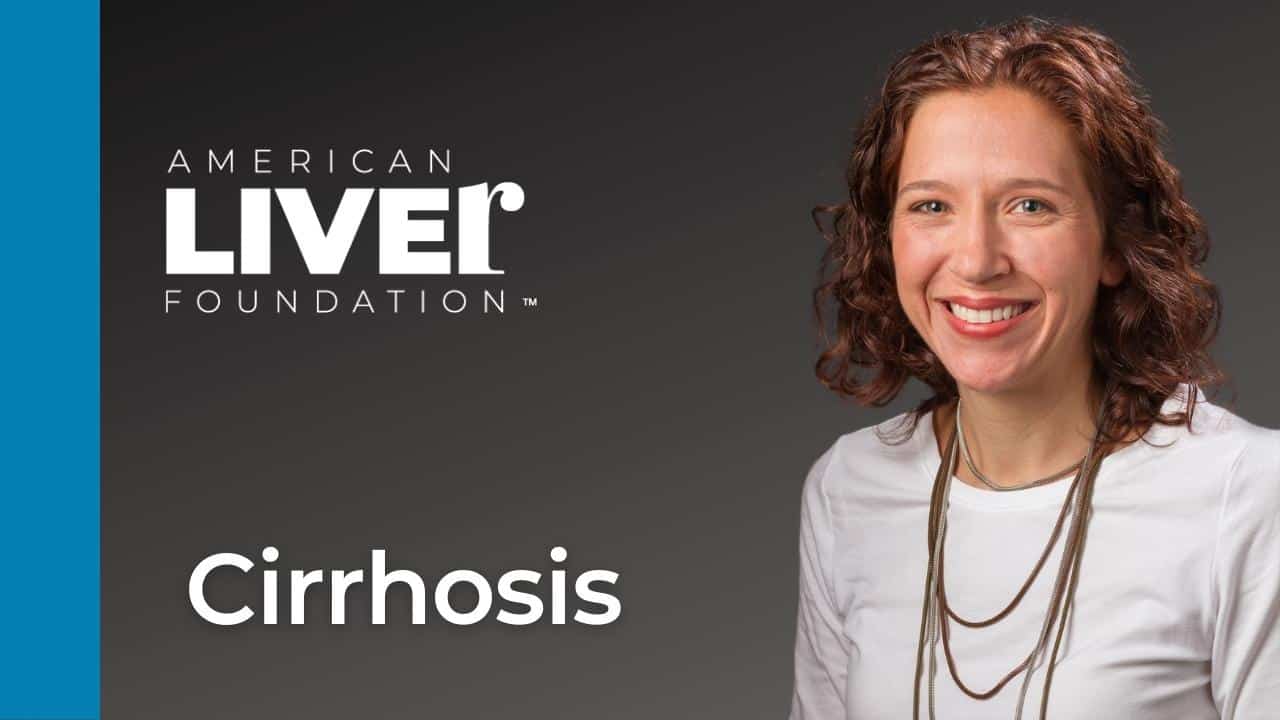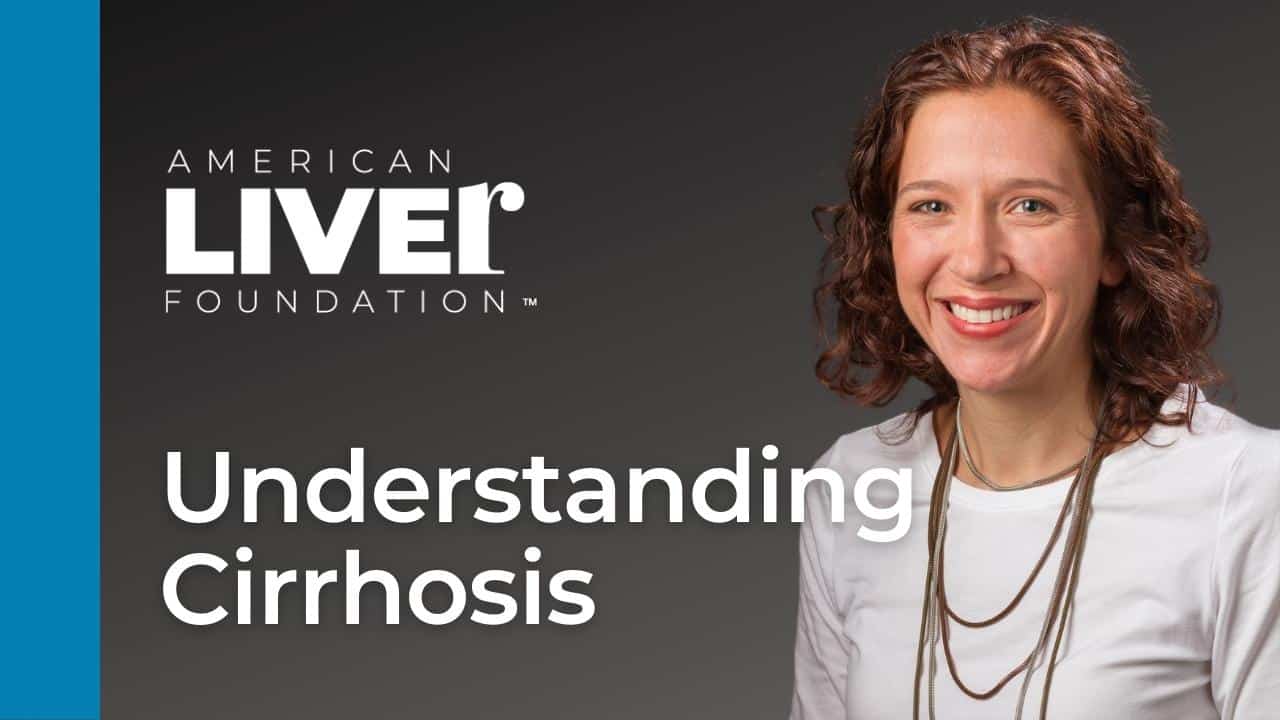Cirrhosis of the Liver
Facts at-a-Glance
- Cirrhosis refers to the replacement of normal liver tissue with non-living scar tissue. It is always related to other liver diseases.
- The most common causes of Cirrhosis are Hepatitis C, Alcohol-related Liver Disease, Non-Alcoholic Fatty Liver Disease (now called metabolic dysfunction-associated steatotic liver disease or MASLD), and Hepatitis B.
- Many people with Cirrhosis have no symptoms in the early stages of the disease.
- Alcohol remains the second most common cause of liver Cirrhosis after hepatitis C virus.
Information for the Newly Diagnosed
What is cirrhosis?
Cirrhosis is the scarring of the liver – hard scar tissue replaces soft healthy tissue. It is caused by swelling and inflammation.
As cirrhosis becomes worse, the liver will have less healthy tissue. If cirrhosis is not treated, the liver will fail and will not be able to work well or at all.
What causes cirrhosis?
Cirrhosis is caused by chronic (long-term) liver diseases that damage liver tissue. It can take many years for liver damage to lead to cirrhosis.
Chronic Alcoholism
Chronic alcoholism is one of the leading causes of cirrhosis in the United States. Drinking too much alcohol can cause the liver to swell, which over time can lead to cirrhosis. The amount of alcohol that causes cirrhosis is different for each person.
Chronic Viral Hepatitis
Chronic hepatitis C is the another leading cause of cirrhosis in the United States. Hepatitis C causes the liver to swell, which over time can lead to cirrhosis. About one in four people with chronic hepatitis C develop cirrhosis. Chronic hepatitis B and hepatitis D also can cause cirrhosis.
Nonalcoholic steatohepatitis (NASH)
Fat build up in the liver that is not caused by alcohol use, is called Non-Alcoholic Fatty Liver Disease (NAFLD), which can lead to nonalcoholic steatohepatitis (NASH), now called metabolic dysfunction associated steatohepatitis or MASH. NASH can cause the liver to swell and can lead to cirrhosis. People with NASH often have other health issues including diabetes, obesity, high cholesterol, coronary artery disease and poor eating habits.
Bile Duct Disease
Bile duct disease limits or stops bile from flowing to the small intestine. The bile backs up in the liver causing the liver to swell and can lead to cirrhosis. Two common bile duct diseases are primary sclerosing cholangitis and primary biliary cirrhosis.
Genetic diseases
Some genetic diseases can lead to cirrhosis. These diseases include Wilson disease, hemochromatosis, glycogen storage diseases, Alpha-1 antitrypsin deficiency, and autoimmune hepatitis.
What are the symptoms and complications of cirrhosis?
There are usually no symptoms of cirrhosis in its early stage. Over time, cirrhosis may cause symptoms and complications:
Symptoms
- Loss of appetite
- Tiredness
- Nausea
- Weight loss
- Abdominal pain
- Spider-like blood vessels
- Severe itching
Complications
- Jaundice, a yellow discoloration of the skin and whites of the eyes
- Bruising and bleeding easily
- Fluid build up and painful swelling of the legs (edema) and abdomen (ascites)
- Hepatic Encephalopathy (HE), a buildup of toxins in the brain that causes confusion, as well as both mental and physical complications
- Liver Cancer
Other Complication: Risk of Falls
Trips, stumbles, and losing your balance can lead to serious, life-threatening injuries. Did you know that individuals with cirrhosis are twice as likely to die from a fall? Maintaining your balance can be a life-or-death matter when it comes to living with liver disease. To date, there have been no major studies examining methods of preventing falls in patients with cirrhosis.
There are a few culprits that may increase the risk of falls in folks with cirrhosis. Increased frailty is more common in people with liver disease. Having poor muscle strength and coordination increases the chance of an individual losing balance. Eating a low-protein diet may also contribute to muscle weakness and frailty. There are some solutions to this, though. Tai-Chi is a type of exercise with slow and gentle movements that can increase balance and reduce the risk of falls in the general population, and it is currently being tested in people with cirrhosis. Additionally, a high-protein diet may help individuals maintain muscle mass.
Another common occurrence among people with cirrhosis is hepatic encephalopathy (HE). This condition results in impaired memory concentration and subsequently increases the risk for falls. Treatment with lactulose, a synthetic sugar medication that is not absorbed by the body, improves HE symptoms and energy, and there is hope that this treatment will also help reduce falls in patients with cirrhosis.
You can work on preventing falls yourself by following these helpful tips below:
Speak Up
- Talk openly with your healthcare provider about fall risks and prevention.
- Make the Home Safe
- Keep your floors clutter free and try to remove small throw rugs. Add grab bars in the bathroom and have handrails on all staircases.
- Keep Moving
- Activities that strengthen legs and improve balance, can prevent falls.
- Get Your Eyes and Feet Checked
- Being able to see and walk comfortably can prevent falls.
Click here to learn more about a study being conducted on this topic.
How is cirrhosis diagnosed?
Cirrhosis is diagnosed by symptoms, blood tests, medical history, and physical examination. A liver biopsy may be needed to check how much of the liver has been damaged. During a biopsy, a small piece of liver tissue is removed and studied in the lab, and additional imaging may be needed.
How is cirrhosis treated?
Treatment options for cirrhosis depend on the cause and the level of liver damage. Depending on the disease causing cirrhosis, medications or lifestyle changes may be used for treatment. The goals of treatment are to prevent further liver damage and reduce complications.
When cirrhosis cannot be treated, the condition is known as End-Stage Liver Disease, or ESLD. ESLD includes a subgroup of patients with cirrhosis who have signs of decompensation that is generally irreversible with medical management other than transplant. Decompensation includes hepatic encephalopathy, variceal bleed, kidney impairment, ascites, lung issues. The decompensated liver disease allows these ESLD patients to be prioritized on the transplant list
What’s the best way to manage cirrhosis?
It is possible to prevent further liver damage with proper management of cirrhosis.
- Maintain a healthy lifestyle (eat a healthy diet and exercise regularly)
- Limit salt in your diet to prevent or reduce fluid buildup
- Avoid raw shellfish
- Stop drinking alcohol
- Talk to your doctor about all of the medications, vitamins and supplements you take.
- Talk to your doctor about hepatitis A and hepatitis B vaccinations
- Practice safe sex
- Use clean needles for tattoos or piercings
- Do not share needles, razors, toothbrushes or other personal items with others
Questions to Ask Your Doctor
- What is the severity of my cirrhosis? What stage am I in?
- What is the underlying cause of my cirrhosis?
- Will I need a liver biopsy?
- Will I need a liver transplant?
- What kinds of lifestyle changes should I be making?
- Will I have routine labs and scans to check my risks of developing liver cancer?
- Can we review which medications I am prescribed and make sure I am on the appropriate?
Patient Stories
Videos
Search for a Clinical Trial
Clinical trials are research studies that test how well new medical approaches work in people. Before an experimental treatment can be tested on human subjects in a clinical trial, it must have shown benefit in laboratory testing or animal research studies. The most promising treatments are then moved into clinical trials, with the goal of identifying new ways to safely and effectively prevent, screen for, diagnose, or treat a disease.
Speak with your doctor about the ongoing progress and results of these trials to get the most up-to-date information on new treatments. Participating in a clinical trial is a great way to contribute to curing, preventing and treating liver disease and its complications.
Start your search here to find clinical trials that need people like you.
Last updated on April 4th, 2024 at 12:34 pm



